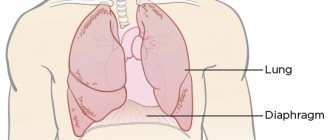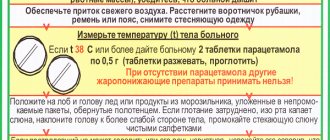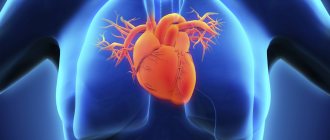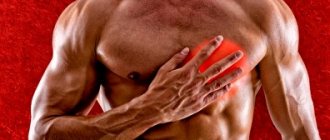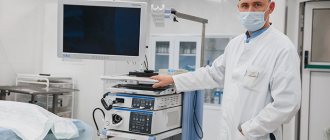The benefits of exercise for human health are beyond doubt, and breathing exercises for heart failure are a valuable therapeutic and preventive tool. But they should not be confused with yoga classes. Breathing exercises are an aerobic exercise that is beneficial in many ways. It can be practiced at any age, in almost any physical condition and with various pathologies.
The benefits of breathing exercises have been scientifically proven; doctors themselves strongly recommend it to their patients. Such rehabilitation often helps even very seriously ill patients. Another advantage is that it does not require any sports equipment or other equipment.
The benefits of breathing exercises
There is a direct relationship between the amount of oxygen in the blood and the performance of the cardiovascular system, hence the influence of the respiratory system on the functioning of the heart becomes obvious. Breathing exercises for heart failure use exercises that have the following positive effects:
- promotes correct movements of the diaphragm, which begins to massage the abdominal organs;
- provides more complete blood flow to the heart;
- normalizes heart rate;
- accelerates gas exchange, blood and body cells are more intensively saturated with oxygen;
- with a significant increase in the oxygen content in the blood, various metabolic processes begin to become more active;
- increases lung capacity;
- relieves anxiety and stress, calms the nervous system;
- generally has a positive effect on the cardiovascular system;
- Breathing deeply relieves excess pressure from the lungs and diaphragm on the heart.
It has been noted that patients with angina pectoris who do breathing exercises are much less likely to experience attacks. With the help of breathing exercises, you can relieve swelling on the face and limbs, which is one of the signs of heart failure (you can read more about how to get rid of swelling in heart failure).
You can also get rid of congestion in the lungs. Arrhythmia begins to appear less often. The flow of blood into the brain becomes more intense, sufficient to nourish the nerve cells.
Exercises for chronic heart failure
Circulatory failure is not a specific disease, but a complex of symptoms that occurs with heart valve defects, myocardial damage, and arrhythmias.
In case of heart circulatory failure, the stroke and minute volumes of the heart decrease, the pulse quickens, arterial pressure decreases and venous pressure increases, blood flow slows down, swelling, cyanosis, and shortness of breath appear.
There are three stages of chronic heart failure.
At stage I, at rest and during normal work and household loads, there are no signs of circulatory disorders. With increased stress, shortness of breath occurs, the pulse quickens and a feeling of fatigue appears, sometimes swelling in the legs appears in the evening.
All starting positions, exercises with objects, apparatus, and on apparatus are used. Include exercises to develop strength, sedentary games, and walking.
Stage II is characterized by signs of insufficiency at rest.
At stage IIa, the liver enlarges, congestion in the lungs, and moderate swelling in the legs are detected. In case of circulatory failure Pa stage - therapeutic exercises increase the effect of medications. General strengthening exercises are used in alternation with static breathing exercises, at a slow pace, at the beginning of the course of treatment - in a lying position, later - sitting and standing, at an average pace, with a decrease in breathing exercises in the ward mode, walking is added.
Stage II b is characterized by a significant enlargement of the liver, pronounced edema, shortness of breath and rapid heartbeat occur with minor movements. Such patients in the hospital are on extended bed rest. mode. In case of circulatory failure stage II b, exercises are used for small and medium muscle groups, passive, active with help at a slow pace.
At stage III of chronic heart failure, congestion with accumulation of fluid (ascites) in the serous cavities and persistent changes in the heart, liver, kidneys and other organs are significantly pronounced. Therapeutic exercises are contraindicated.
Contraindications
But breathing exercises for heart failure are not indicated for everyone. There are a number of diseases for which it cannot be done. These include:
- radiculitis;
- acute thrombophlebitis;
- damage to intervertebral cartilage and discs;
- severe spinal injuries;
- head injuries;
- mental disorders;
- various somatic pathologies;
- bleeding;
- post-infarction state;
- uncontrolled increase in pressure.
If someone has one of these health problems, then he should first consult a medical specialist who will select a set of exercises that will not harm the patient’s health.
Light breath of beauty
"Everyone hears how he breathes,
As he breathes, so he writes...”
(Bulat Okudzhava)
In the arsenal of tools that we use, trying to be healthy, look younger and more beautiful, very often we miss such an important tool as breathing.
It seemed that breathing could be more natural; we don’t even think about it and only notice it when we don’t have enough air and it becomes difficult to breathe. But our body is not at all indifferent to how we breathe, shallowly or deeply, quickly or slowly - this determines how much oxygen enters the blood.
If our blood is fully enriched with oxygen, the body effectively gets rid of toxins, the immune system is strengthened, the wound healing process is faster, nerve fibers are strengthened, the skin becomes elastic and beautiful.
Of course, all this depends not only on correct breathing, there are other important factors, but also on breathing, but we pay much less attention to it than, say, choosing a diet or choosing cosmetics. But in vain! By breathing in a certain way, you can achieve a variety of goals, cope with various ailments and disabilities.
There are a huge variety of breathing exercises systems and techniques.
.
from the general strengthening and universal Chinese Qi-Gong and Indian Pranoyama, to breathing exercises according to Buteyko, which helps with asthma. There is also a method of paradoxical breathing according to Strelnikova
. It was developed to restore and expand the vocal range of professional singers, but the range of problems for which this technique proved effective subsequently expanded greatly, including bronchial asthma, chronic pneumonia, chronic bronchitis, chronic runny nose and sinusitis, hypotension, heart failure, arrhythmia, stuttering, osteochondrosis. According to the testimony of people who have practiced this gymnastics, it also helps with vegetative-vascular dystonia, angina pectoris, varicose veins and some women's diseases.
The question arises, with the help of which breathing exercises can you most effectively lose excess weight, improve your skin, and look younger? Maybe there are special sets of breathing exercises designed specifically for this purpose? Yes, there are such methods!
Wisdom of the East
People in the East have long known about the miracles that can be achieved by performing certain breathing exercises. Thus, in the medical books of Ancient China it is written that if you strictly follow the rules of breathing, you can live up to 360 years. Well, maybe 360 years is an exaggeration, but even now in Chinese sanatoriums, breathing exercises are often the main method of treatment for many diseases and disorders in the body.
There are also special breathing exercises for weight loss in China - Jianfei gymnastics
. The name can be translated as “lose fat.” The complex is very simple and consists of only three exercises - “Wave”, “Frog” and “Lotus”. But it’s not surprising that by doing them daily, preferably 3 times a day, you can get rid of excess weight in a very short time and generally improve your health.
• The first exercise in the complex is “Wave”
- dulls the feeling of false hunger and fights excessive appetite. In the classic version, it is performed while lying down (although you can also sit, stand, or walk). So, lie down on the mat on your back, legs bent at the knees (90 degree angle between the thigh and shin), feet on the floor, one palm on the chest, the other on the stomach. When performing breathing movements, they will help us a little.
When inhaling, we straighten and fill the chest and draw in the stomach; when exhaling, on the contrary, we inflate the stomach and lower the chest. This creates a “wave”! The pace of breathing is normal for you, there is no need to speed up or slow down. But if you feel a little dizzy, breathe more slowly. To begin with, 40 complete cycles (inhale-exhale) are enough, then you can increase them to 60 and perform them only when you feel an attack of false hunger.
• Second exercise “Frog”
. Performed while sitting on a chair. The knees are shoulder-width apart, the angle between the thigh and lower leg is 90-70 degrees. We clench our left hand into a fist and cover it with our right palm (vice versa for men), we place our elbows on our knees, and rest our forehead on the fist. Now you can close your eyes and relax. Think positive and smile.
When you are completely tuned in, you can start the exercise, eyes closed. Focus, now is the most important thing! We take a free breath through the nose and draw the air into the abdominal area, without weakening our attention. Now exhale lightly, slowly through your mouth. The abdomen gradually becomes relaxed and soft.
Again we take a slow breath through the nose, the lower abdomen gradually fills with air and swells, hold our breath for 2 seconds, then again take one additional short breath and begin to exhale slowly.
The sequence is as follows: inhale-exhale-inhale-hold-short inhale-exhale. Why "frog"? It's simple - when you breathe, your stomach swells and stretches like a frog's, while your chest remains motionless. The exercise should be performed for about 15 minutes, 3 times a day (except for critical days).
Performing the “Frog” improves metabolism (hence weight loss), stimulates blood circulation, increases tone, in addition, it is an excellent massage of internal organs and improves skin condition.
• The third exercise of the complex is “Lotus”
. The Lotus pose is well known to everyone who has done at least a little yoga. So, let’s sit in the Lotus pose, you can just sit on your buttocks, legs in front of you crosswise, left leg on top of the right (vice versa for men). You can perform the exercise while sitting on a chair as in “The Frog”.
Place your hands on your legs in front of your stomach (or on your knees), palms facing up. Straighten your lower back slightly, lower your shoulders, chin down, eyes closed, the tip of your tongue touches the upper palate, relax your body and soul, think about good things.
The first stage of the exercise, 5 minutes, we control the breathing process
.
We breathe deeply, easily, naturally, silently, the movements of the chest and abdomen are imperceptible. Second stage, 5 minutes – control the exhalation
.
We inhale naturally, we don’t control it, but when we exhale we try to relax and exhale the air deeply, evenly, for a long time. Third stage, 10 minutes – do not control breathing
. neither inhale nor exhale. We breathe naturally, but at the same time we maintain the feeling that the breath is there, it is nearby, try not to be distracted by extraneous thoughts, if they arise, do not pay attention to them, just switch to the feeling of the breath. The exercise can be performed in combination with the “Frog”, or separately, at any time (morning, afternoon, evening). This simple meditation serves to calm and relax, improves metabolism, relieves fatigue, and improves appearance.
Western rationality
The most popular breathing technique for gaining slimness, vigor and health, which today is offered by the rational and pragmatic West, is the “Bodyflex” technique.
The essence of the Bodyflex technique is deep breathing plus exercises for flexibility and muscle strengthening. There are a total of 26 exercises in the complex, of which the first 12 are most often performed; each exercise is designed to strengthen a specific muscle group. For example, the “lion” exercise for the facial muscles is an “ugly grimace” for the neck muscles, and the “Seiko” exercise is designed to strengthen the muscles of the outer thighs, etc.
The basis of each exercise is belly breathing, or diaphragm breathing. This is a more physiological and correct breathing, which we breathed in childhood, but with age we forgot this method of breathing and switched to chest breathing. With deep diaphragm breathing, the blood is well saturated with oxygen, all the cells of the body self-clean, the body becomes strong, and immunity increases.
Breathing in Bodyflex is performed in 5 stages and begins with exhalation:
- exhale (pull in the stomach),
- take a deep breath (push your stomach out),
- strong exhalation,
- hold the breath
- lower your head (if the exercises are not done lying down), pull in your stomach and take the main pose. Holding your breath, remain in this position for 8-10 seconds.
To achieve success and maximum effect, there is a prerequisite: do this breathing exercise every day for 15 minutes in the morning on an empty stomach!
Well, all that’s left to do is choose a set of breathing exercises that suits you best, and spend some of your free time doing these exercises every day. A positive result will not keep you waiting - slimness, vigor, beautiful healthy skin and a great mood every day!
Breathing exercises for heart failure
Nowadays, many breathing exercises have been invented. Each of them has its own effect on the body, but it is always aimed at strengthening it. Techniques such as pranoyama and qi gong have become very popular.
Buteyko breathing exercises have been developed for people suffering from asthma. The method of paradoxical breathing developed by Strelnikova is intended for people with vegetative-vascular dystonia, angina pectoris, and heart failure. You can study both methods in our article “Breathing exercises for cardiac arrhythmia.”
Jianfei Gymnastics
Many people have become convinced that Eastern breathing techniques can work wonders. Ancient Chinese medical books claimed that with proper breathing techniques, a person could live over 350 years. Chinese breathing techniques are widely used by local hospitals today. One of these effective methods is Jianfei gymnastics, which includes three exercises that need to be done daily in the morning, afternoon and evening. They are as follows:
"The Frog Making Waves"
It is most convenient to do this exercise while lying on your back on a gymnastics mat and bending your knees so that there is a right angle between the thigh and shin. In this case, your feet need to be pressed to the floor. Place one palm on your chest and the other on your stomach. As you inhale, straighten your chest, increasing its volume and at the same time drawing in your stomach. And while exhaling, on the contrary, inflate your stomach and relax your chest.
You should not change the pace of breathing, but maintain its natural rhythm. For beginners, it will be enough to take 40 inhalations and exhalations, and subsequently the number of movements can be increased by one and a half times.
Video of the “Wave” exercise:
"Frog"
To do this exercise, sit on a chair with your knees no wider than your shoulders. It is desirable that the angle between the thigh and lower leg be as close to straight as possible. Men need to clench their right hand into a fist and place their left hand on top of it, and women need to do this in a mirror image. In this case, the elbows should be on the knees. Next, lower your head down until your forehead touches your fist.
Before performing the exercise, you need to tune in: close your eyes, remember something pleasant, relax, you can even smile. The movements must be done with concentration and using the imagination, because the entire chain of movements will be done with your eyes closed.
Inhale through your nose, mentally imagining the air entering your lungs. This is followed by a light, smooth exhalation through the mouth. Gradually the stomach begins to relax. After this, take the next breath and hold your breath for a couple of seconds, and, without exhaling, take another quick breath, after which you can proceed to a slow exhalation. This sequence of movements should be done for 15 minutes, and repeated three times a day.
The result of this exercise will be the normalization of blood circulation and metabolic processes, massage of the thoracic and abdominal organs, as well as the activation of vitality.
This activity is not recommended for women during their menstrual periods.
Video exercise “Frog”:
"Lotus"
You should take the well-known “lotus” pose. In this case, men need to put their right leg on their left, and women do the opposite. You can try sitting in this position on a chair. Place your hands on your knees or slightly higher with your palms facing up. Lower your shoulders and straighten your back. Close your eyes and tilt your head slightly forward. Touch the roof of your mouth with the tip of your tongue. In this position, it is important to relax psychologically and physically and try to think positively. The following are three steps to this exercise:
- breathing control - take deep, but at the same time natural and light inhalations and exhalations, without changing the volume of the stomach and chest - this stage should last 5 minutes;
- control of exhalation - inhalation continues to be ordinary, and with a long, deep and even exhalation you should relax as much as possible - this stage has the same length;
- “uncontrolled breathing” - maintain the naturalness of inhalation and exhalation, while the person must focus on breathing, feel it - the duration of this stage is 10 minutes.
With this exercise you can calm down, get rid of stress, relieve fatigue and improve metabolism.
Video exercise “Lotus”:
Rehabilitation for cardiovascular diseases
Rehabilitation of patients with cardiovascular diseases is one of the most pressing tasks of modern medicine, because This pathology ranks first among other causes of mortality. From this article you can learn the basic principles and stages of rehabilitation of cardiovascular diseases.
1. Introduction.
Rehabilitation of patients with cardiovascular diseases is one of the most pressing tasks of modern medicine, because This pathology ranks first among other causes of mortality. It is no secret that any disease of the circulatory system leads to disruption of the function of organs and systems, the oxygen transport system, the heart muscle and the brain are disrupted, as the most sensitive and sensitive organs to oxygen deficiency begin to react to this. At the initial stage, this is manifested by a decrease in physical activity and human performance.
2. The principle of operation of the rehabilitation program.
The therapeutic and preventive effect of therapeutic exercises or physical therapy for cardiovascular diseases is due to the acceleration of lymph and blood flow, an increase in circulating blood volume (CBV), acceleration of metabolism in tissues, improvement of microcirculation, normalization of blood pressure, improvement of cognitive functions, acceleration of regeneration of damaged tissues and as a consequence, normalization of a person’s functional and psycho-emotional status (sleep, mood, etc.).
3. Stages of rehabilitation.
Before moving on to the stages of exercise therapy for cardiovascular diseases
already existing in the patient, it is necessary to note the importance of preventing this pathology and in this context one should understand the importance of carrying out hygienic therapeutic exercises at home (morning exercises) and in working conditions (five-minute exercise sessions).
- Stage 1 - Carrying out exercise therapy in the acute period. As a rule, classes are held exclusively in gentle modes (lying down, sitting) with a gradual expansion of the mode and load. The decision on the level of load is made by the rehabilitation specialist together with the attending physician (therapist, cardiologist, neurologist).
- Stage 2 - Carrying out exercise therapy during the recovery period. During this period, at the discretion of the rehabilitation physician, the regime is expanded and classes are conducted in sitting and standing positions, and non-forced walking on a horizontal surface is allowed. Further, if the course of the recovery period is favorable, patients are given fractional walking along the steps, mainly from top to bottom, and then assessing the degree of cardio load from bottom to top. Includes classes in the pool or on exercise machines, etc.
- Stage 3 - Supportive. The main task in this period is to stabilize and strengthen the patient’s acquired skills developed during the previous stages of rehabilitation. An increase in his performance and endurance, tolerance to stress and, as a result, a maximum “return” to his previous physical, psycho-emotional and social status.
ONLINE CONSULTATIONS
We treat where it is convenient for you
MORE DETAILS
4. Contraindications.
Contraindications, as well as the prescription of physical therapy for cardiovascular diseases
determined by a rehabilitation doctor! And this largely depends on the severity of the underlying disease and the presence of complications.
But there are also absolute contraindications to performing exercise therapy with this category of patients, namely, the following are prohibited:
- breath holding exercises
- prolonged or sudden head tilts
- jumping
- no fractional load
- classes in stuffy, unventilated rooms
- too early or late class hours
- supplying excessive cardio load (stepper, climbing treadmill), etc.
5. Indications for physical therapy for cardiovascular diseases.
- Arterial hypotension (hypotension)
- Vertebrobasilar insufficiency (VBI)
- Transient cerebrovascular accidents (TCI) and conditions after acute cerebrovascular accidents (ACVA)
- Coronary heart disease (CHD)
- Angina pectoris
- Previous myocardial infarction (MI)
- Myocarditis, pericarditis
- Cardiac arrhythmias
- Heart failure (HF)
- Rheumatism
- Congenital and acquired heart defects
- Atherosclerosis
6. Conclusion.
Of course, you need to understand that rehabilitation measures, including exercise therapy, for cardiovascular diseases
are not the only method of treating patients, but require a comprehensive analysis and inclusion of basic and auxiliary treatment methods such as surgical, microsurgical, physiotherapy, massage, pharmacotherapy, etc. Only in conjunction with modern treatment methods can physical therapy be effective and lead to desired result.
Our clinic has a department of rehabilitation and restorative medicine, where patients can fully recover and those who are healthy can relax. There are caring doctors here who will help you cope with back pain and stiffness after injuries to bones, joints, muscles, and ligaments. Rehabilitation specialists are ready to help people after a stroke, children and adults with cerebral palsy, and patients with other neurological diseases.
An online rehabilitation format is also available for adults, children over 10 years old, pregnant and nursing mothers. We will help you organize classes and consultations with doctors so that you can stay at home.

